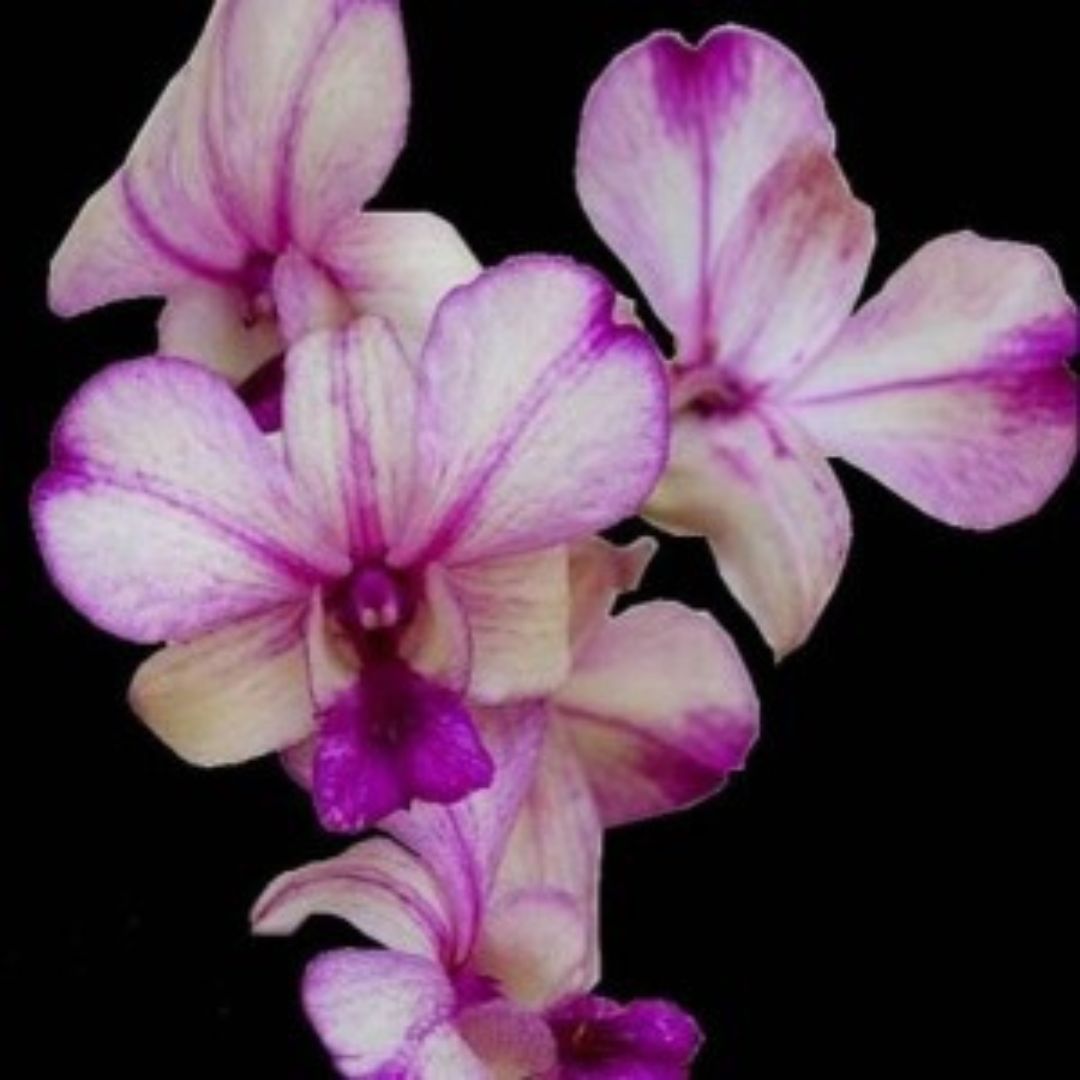

Product Description - Dendrobium Popeye - Blooming Size
| Type | Hybrid |
| Fragrance | No |
| Flower colour | Pink lines in off – white petals |
| Flower size | 6cm – 8cm |
| Humidity | 60 % – 80% |
| Ideal growing temperature | Intermediate to warm |
| Light requirement | 70% indirect sunlight ideally |
| Plant size | Blooming size |
| Pot size | 10 cm |
| Media | Coconut husk |
| Blooming frequency | Multiple times a year |
Note: The plants may or may not contain flowers or buds. There are chances that the buds/flowers could dry up due to transit stress even though we pack them with extreme care. The local climatic conditions and fertilization habits can affect the brightness & colour intensity of flowers. While we make every effort to match the actual colours of the flowers, the photographs may not be the exact representation, due to different monitor settings.
Shipping: This orchid ships for FREE. Please note that we might need up to 2-3 business days to properly dry and pack the plant and ship them.
Dendrobium Popeye
Dendrobium Popeye is a beautiful and exotic hybrid orchid that is sure to add a touch of tropical elegance to any home or garden. It is a cross between two Dendrobium species, Dendrobium speciosum and Dendrobium bigibbum, and is known for its stunning flowers that resemble mini cartoon characters.
The Dendrobium Popeye is native to Southeast Asia, where it grows in humid rainforests at elevations of up to 6,000 feet. It is a tropical plant, so it requires warm temperatures and high humidity to thrive. It is also sensitive to direct sunlight, so it is best to keep it in a location that receives indirect or filtered light.
The Dendrobium Popeye is a small to medium-sized plant that reaches a height of about 12-24 inches. Its leaves are narrow and elongated, and range in color from bright green to dark green. The plant produces clusters of small, fragrant flowers that are typically about 1-2 inches in diameter. These flowers are white or pink in color, and are covered in intricate patterns of purple, red, or yellow spots or stripes. The flowers are held on long, thin stems that rise above the foliage, creating a dramatic and eye-catching display.
The Dendrobium Popeye is a low maintenance plant that is easy to care for. It prefers well-draining soil and should be watered regularly, but allowed to dry out slightly between watering. It is important to avoid over-watering, as this can lead to root rot. The plant should be fertilized every two to four weeks during the growing season, using a balanced fertilizer.
In addition to its beauty, the Dendrobium Popeye is a popular plant among collectors due to its rarity. It is not widely available in the United States, making it a prized possession for those who are able to get their hands on one.
Overall, the Dendrobium Popeye is a stunning and unique plant that is sure to make a statement in any home or garden. Its exotic appearance and sweet fragrance make it a perfect choice for anyone looking to add a touch of tropical beauty to their space.
Caring Guide
Dendrobium Popeye is a beautiful and exotic hybrid orchid that is sure to add a touch of tropical elegance to any home or garden. It is a cross between two Dendrobium species, Dendrobium speciosum and Dendrobium bigibbum, and is known for its stunning flowers that resemble mini cartoon characters. If you have recently purchased a Dendrobium Popeye or are considering adding one to your collection, here are some tips on how to care for this exotic plant.
Light: The Dendrobium Popeye prefers indirect or filtered light. It is sensitive to direct sunlight and can burn or fade if exposed to too much sun. A location near an east- or west-facing window is ideal, as it will receive morning or afternoon sun without being exposed to the hot midday sun. If you are growing your plant indoors, you may need to supplement the natural light with artificial grow lights.
Temperature: The Dendrobium Popeye is a tropical plant that requires warm temperatures to thrive. It is best to keep the plant in a location that stays between 70 and 85 degrees Fahrenheit. Avoid placing the plant in a location that experiences temperature fluctuations, as this can stress the plant and prevent it from flowering.
Humidity: The Dendrobium Popeye requires high humidity to thrive. If you are growing the plant indoors, you can increase the humidity by placing the plant on a tray filled with pebbles and water, or by using a humidifier. You can also mist the plant with a spray bottle to increase the humidity around the leaves.
Water: The Dendrobium Popeye should be watered regularly, but allowed to dry out slightly between watering. It is important to avoid over-watering, as this can lead to root rot. The plant prefers well-draining soil and should be watered when the top inch of soil feels dry to the touch. Water the plant thoroughly, and allow the excess water to drain away.
Fertilizer: The Dendrobium Popeye should be fertilized every two to four weeks during the growing season, using a balanced fertilizer. Avoid over-fertilizing, as this can lead to excess foliage growth at the expense of flower production. It is also a good idea to flush the soil with water every few months to remove excess fertilizer salts.
Repotting: The Dendrobium Popeye should be repotted every two to three years, or when the plant outgrows its current pot. Choose a pot that is slightly larger than the current one, and use a well-draining potting mix specifically formulated for orchids. Be sure to loosen the roots and remove any dead or damaged roots before repotting.
With proper care, the Dendrobium Popeye can thrive and produce stunning flowers for many years. By providing the right combination




